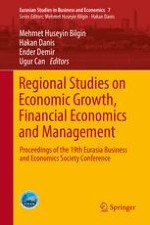2017 | OriginalPaper | Buchkapitel
Financial Risk Tolerance as a Predictor for Malaysian Employees’ Gold Investment Behavior
verfasst von : A. W. Ahmad Fauzi, A. R. Husniyah, S. Mohamad Fazli, O. Mohamad Amim
Erschienen in: Regional Studies on Economic Growth, Financial Economics and Management
Aktivieren Sie unsere intelligente Suche, um passende Fachinhalte oder Patente zu finden.
Wählen Sie Textabschnitte aus um mit Künstlicher Intelligenz passenden Patente zu finden. powered by
Markieren Sie Textabschnitte, um KI-gestützt weitere passende Inhalte zu finden. powered by
